










“What I feared has come upon me; what I dreaded has happened to me.” (Job 3:25)
The catastrophe that befell the people of Israel on the morning of Simchat Torah was the realisation of one of the country’s worst nightmares: untold numbers of Israelis – including grandparents, children, and entire families – abducted by Hamas and spirited across the border, following an unprecedented invasion by land, air and sea, in which hundreds of Israelis were killed and wounded.
The footage of hundreds of Hamas terrorists breaking through the border fence between Gaza and Israel at numerous points and entering Israeli territory to murder, maim and kidnap Israelis; of Hamas gunmen riding pickup trucks through the streets of Israeli towns and going house by house to seek out victims; of young people who had participated in an all-night dance party running screaming through the Israeli desert with Hamas terrorists in pursuit; of Israeli civilians, including elderly people and mothers with children, paraded through the streets of Gaza as locals chant “allahu akbar” – they all seem too hellish, too ghastly to be real. And yet, they are.
Israel's greatest military and intelligence failure
The events of last Saturday morning (Israeli time) represent Israel’s greatest military and intelligence failure in half a century – if not in the 75 years of the country’s existence.
As I write this, more than 250 Israelis have been confirmed dead and some 1,500

wounded in the unprecedented terrorist assault. Both numbers are certain to rise.
The number of Israelis – both civilians and soldiers – taken hostage by Hamas has not been confirmed, but it is expected to be staggeringly high.
It is difficult to grasp the enormity of this disaster and the effect it is likely to have on Israel, but another devastating surprise attack may help us understand the magnitude of what we are currently experiencing.
The attacks of September 11, 2001 changed a nation and shaped a generation of Americans. It altered the way people live their lives and go about everyday activities, shattered many Americans’ sense of security and plunged America into a war on terror that is ongoing to this day. At the time of the 9/11 attacks, America’s population was about 285 million. 2,977 people were murdered in the terror attacks in New York, Washington,
How many common words of 5 or more letters can you spell using the letters in the hive? Every answer must use the centre letter at least once. Letters may be reused in a word. At least one word will use all 7 letters and have a direct Jewish connection.

Proper names and hyphenated words are not allowed. Score 1 point for each answer and 3 points for a Jewish word that uses all 7 letters.
Rating: 8 = Good; 12 = Excellent; 14 = Genius
and Pennsylvania – roughly 0.001 per cent of all Americans. The airwaves, the papers, and the internet were filled with stories of the dead – it felt as though every American knew someone who lost someone or whose life had somehow been directly affected.
Israel’s population is roughly 9.7 million. The more than 250 confirmed dead thus far in Saturday’s terror attack represent more than 0.002 per cent of all Israelis – a proportion of Israel’s population that is double that of Americans killed in 9/11.
The stories have already started pouring in: the young people murdered at the desert party; the local mayor killed in a gun battle; the fire chief and his deputy executed in their hometown. They will build to a deluge in the days ahead – the faces of those killed, the families shattered, the communities in mourning. It is too soon to say what effect the events of this weekend will have on our lives,
but it is certain to be profound and lasting. We are likely in for a military campaign the likes of which we haven’t seen in decades, as Israel seeks to rescue its kidnapped citizens and deal Hamas and its leadership a devastating blow. The price Hamas is likely to demand for the return of the hostages – alive or dead –may tear the country apart.
The decision of Israel's enemies decides Israel's future
A decision by Hezbollah or its overlords in Iran to join the warfare and launch an offensive in Israel’s North may plunge the country and the region into all-out war. Israel’s neighbours will be calculating and reassessing their views of Israel’s military prowess and may calibrate their approach to the Jewish state accordingly. The country’s security doctrine will need to be overhauled and its capabilities adjusted to address the threat posed by Hamas and its fellow terrorist groups. At the same time, a political realignment precipitated by the formation of an emergency unity government may impact domestic politics for years to come. And the effect this will have on our collective psyche and our shared consciousness, on our very sense of security and our confidence in our ability to live freely and securely in this land – it will be felt for decades if not generations.
The full scope of the catastrophe is, as yet, unknown, but one thing is clear: the events of October 7, 2023 – one of the darkest days in the country’s history – will change everything. This is Israel’s 9/11. Nothing will ever be the same.
Friday, Oct 14, 2022
Shabbat ends, Oct 15, 2022
Friday, Oct 21, 2022
7:18 pm
8:17 pm
7:25 pm
Shabbat ends, Oct 22, 2022 8:25 pm
Friday, Oct 28, 2022 7:32 pm
Shabbat ends, Oct 29, 2022 8:33 pm
Melbourne Jewish Report Disclaimer:
Except where expressly stated otherwise, content in The Melbourne Jewish Report is provided as general informations only. The articles in this paper have been contributed by a third party. The opinions, facts and any media content here are presented solely by the author, and The Jewish Report assumes no responsibility for them. It is not intended as advice and must not be relied upon as such. You should make your own inquiries and take independent advice tailored to your specific circumstances prior to making any decisions. We do not make any representation or warranty that any material in the papers will be reliable, accurate or complete, nor do we accept any responsibility arising in any way from errors or omissions. We will not be liable for loss resulting from any action or decision by you in reliance on the material in the papers. By reading the papers, you acknowledge that we are not responsible for, and accept no liability in relation to, any reader’s use of, access to or conduct in connection with the papers in any circumstance. Photographs submitted by individuals or organisations are assumed to be their property and are therefore not otherwise credited. All articles in this paper have received the expressed consent of the author to publish in this paper.
The Jewish Report; ISSN 2204-4639
Publisher: The Jewish Report Pty Ltd (ACN 167302981)
Distributor: TJR Distribution Pty Ltd ACN 165158029
Comments or suggestions to: editor@thejewishreport.com.au
Yoni Glatt has published more than 1,000 crossword puzzles worldwide, from the LA Times and Boston Globe to The Jerusalem Post. He has also published two Jewish puzzle books: "Kosher Crosswords" and the sequel "More Kosher Crosswords and Word Games".
ANSWERS PAGE 10
Article submissions to: www.thejewishreport.com.au/article-submission-guidelines
Advertising: editor@thejewishreport.com.au
Website: www.thejewishreport.com.au
Printer: Spotpress Pty Ltd
May 2023 saw the inaugural Legacy Mission to Israel conducted by The Australian Friends of the Hebrew University (AUSTFHU).
The Legacy Mission is a concept developed by The British Friends of the Hebrew University whereby a donor has provided funds for a group of benefactors to travel to Israel with all expenses paid by the donor subject to participants agreeing to a bequest in their Wills to The Hebrew University. The concept is now being applied in Australia thanks to the generosity of an Australian donor.
Since the laying of its cornerstone in 1918, Hebrew University has become one of Israel’s and the Jewish world’s greatest success stories.
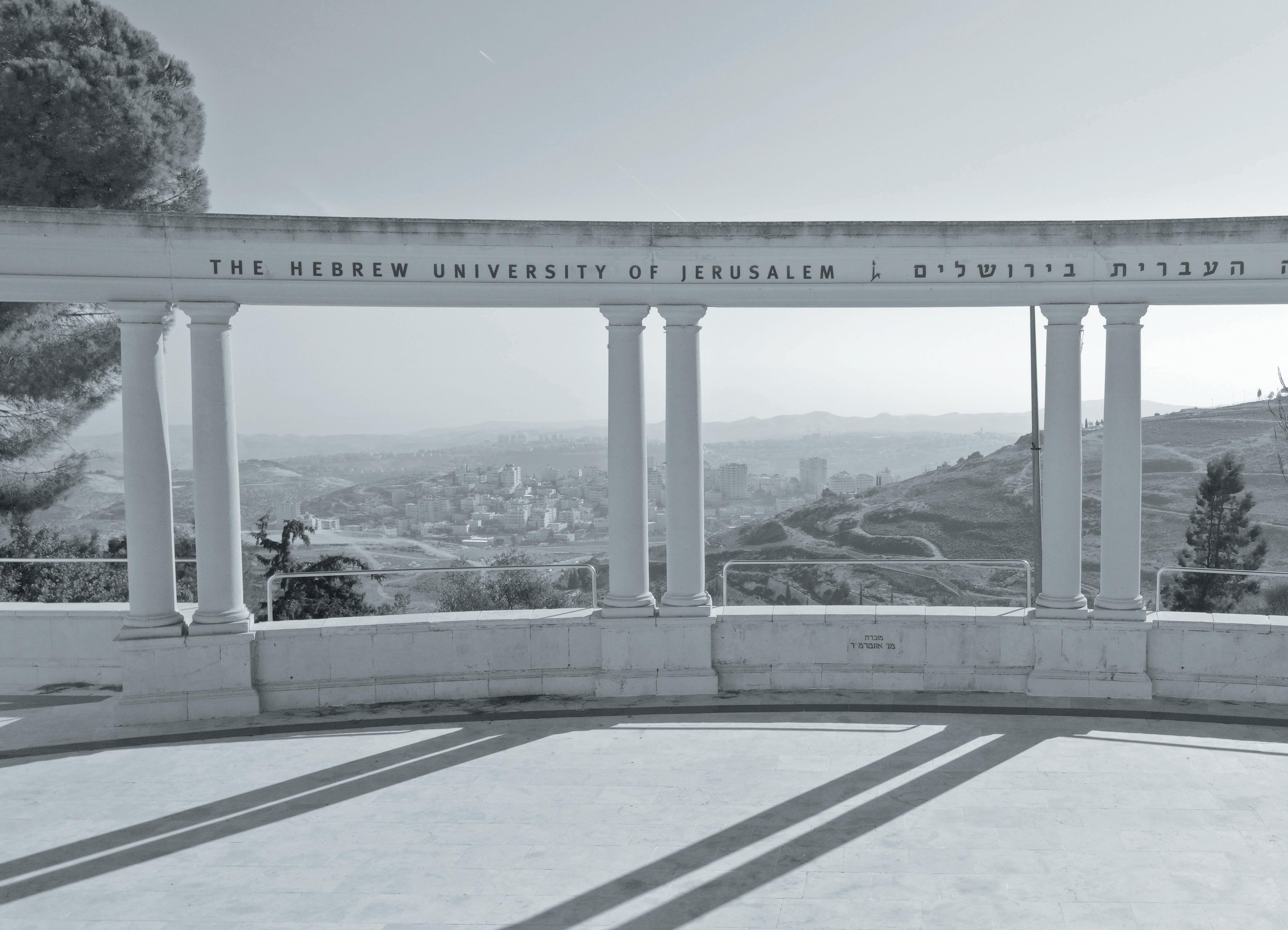
Its excellence and position as Israel’s foremost university have been reflected in its outstanding results and contributions towards a better world. It has received more awards and accolades than many universities that are far larger.
The Hebrew University serves more than 25,000 students from some 80 countries on six campuses. Its founders include luminaries such as Albert Einstein, Chaim Weizmann, Sigmund Freud and Martin Buber. Hebrew University is ranked in the top echelon of the world's leading universities. With a proud tradition of innovation and excellence, faculty members and alumni have won
Following in the footsteps of The Hebrew University’s success, the 2023 Legacy Mission was an outstanding success with participants gaining a deeper understanding of what the Hebrew University means to the Jewish People and to the world.
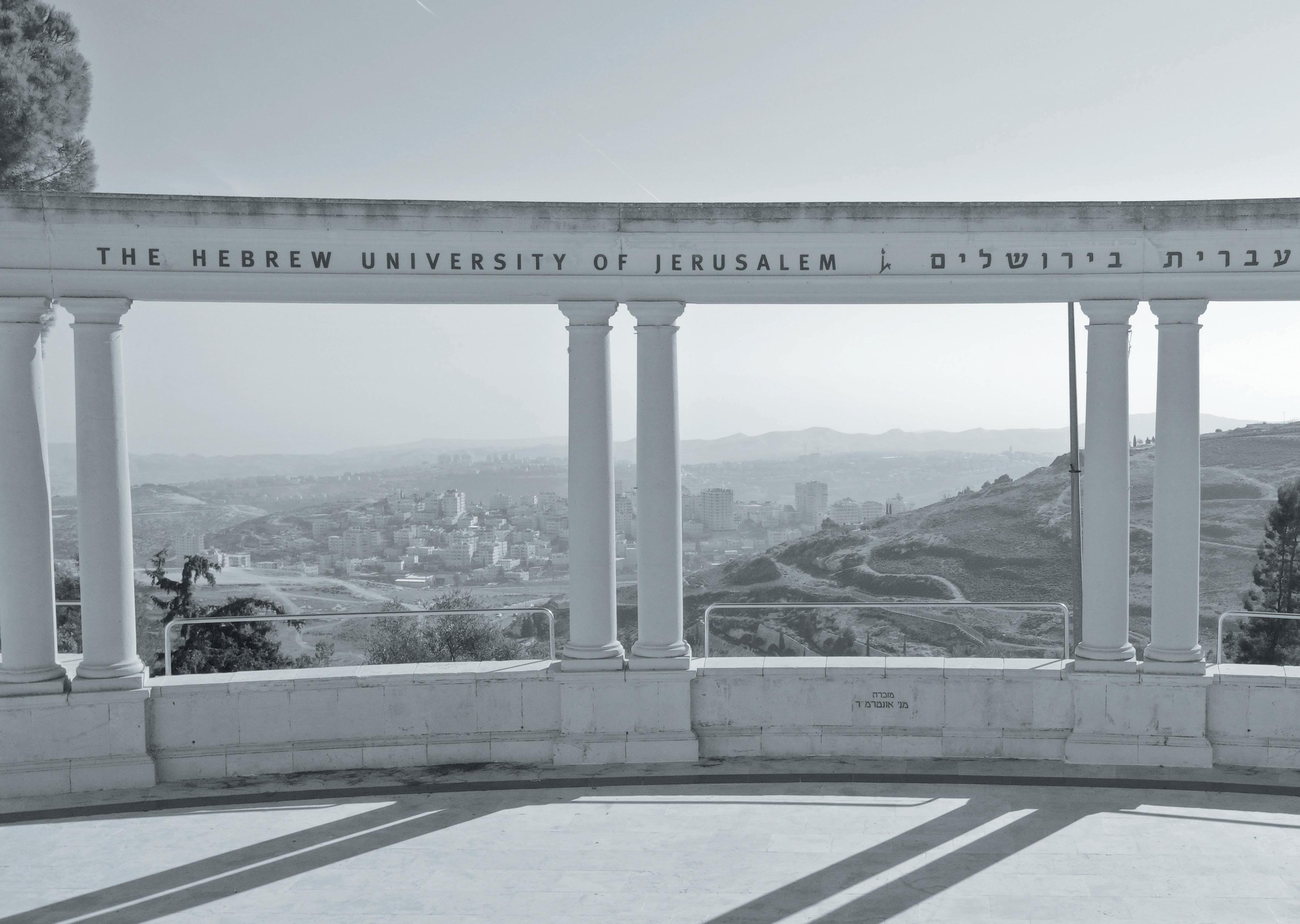
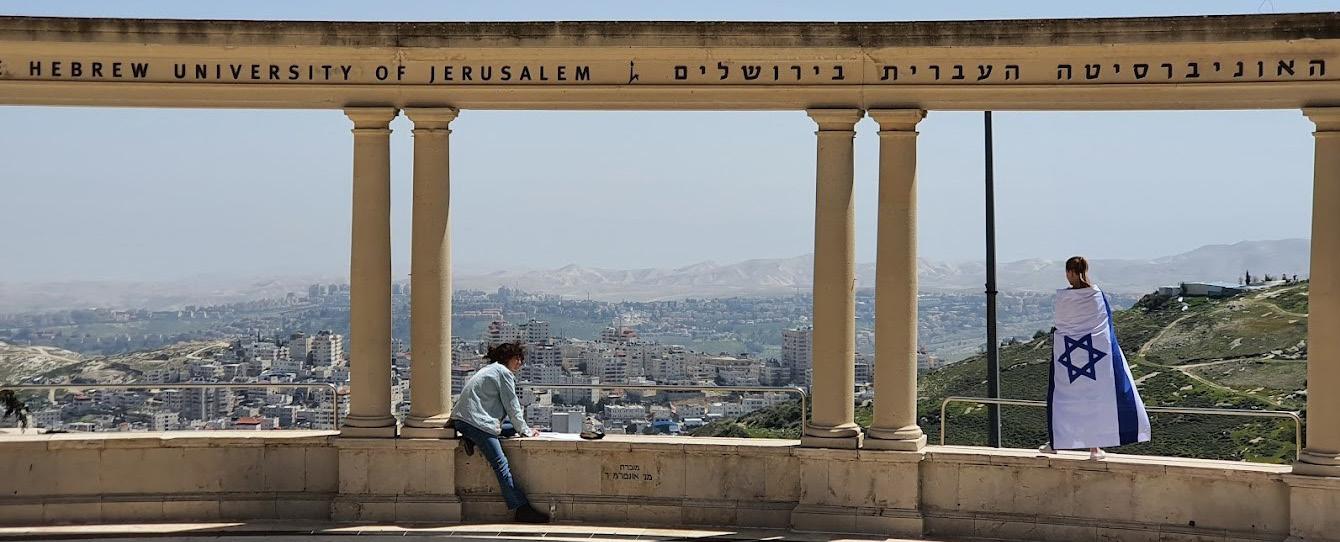
Among comments received from participants were the following:
• “Jampacked with activities, tours, meetings, talks and introductions to all kinds of fascinating luminaries –experts in their fields: professors, doctors, researchers, veterinarians, librarians, authors, artists and archeologists. We visited five campuses (didn’t make it to the sixth in Eilat), were exposed to all
manner of interesting research projects and innovative advances in every sphere of human activity … and even animal activity, at the state of the art Koret School for Veterinary Medicine.”
• “The Legacy Mission was brilliant and I had the best time. Definitely plan another Mission and I will highly recommend it to anyone who wants to be part of it.”
• “Just wanted to take this opportunity to thank you for a wonderful, stimulating, enjoyable and outstanding week together. You spent so much time ensuring its success and I am even more dedicated to supporting the university and its research projects.”
As a result, The Australian Friends of The Hebrew University have broadened the
scope of the 2024 Legacy Mission next May.
It will join forces with its British Friends to orchestrate the Mission, which will coincide with Yom Ha’atazmaut, Israel’s 76th Independence Day.
In addition to enjoying Jerusalem and all that it has to offer, the 2024 Mission will also incorporate Tel Aviv, enabling participants to view the spectacular Independence Day fly pasts and naval tributes to the State of Israel.
Those interested in being part of this remarkable experience should contact Rob Schneider at ceo@austfhu.org.au or call (02) 9389 2825 for further information.
The battle against the Nazis relied on machinery, manpower, money and even a bit of magic.
Jasper Maskelyne, a celebrated British magician and illusionist, is credited by many historians with having devised several fantastic acts of camouflage and stage illusions that helped turn the tide against the Germans, especially during key battles in North Africa.
Magic was in his genes. For more than 60 years, the Maskelyne family, including his father and grandfather, had been considered Britain’s “first family of conjuring”. Jasper’s father, John, devised the famous Box Trick, in which a female assistant vanished from a sealed and inspected cabinet, along with other tricks that became standard.
On 14th February, 1941, when German troops rode into Tripoli with nearly unstoppable force, they already controlled nearly all of North Africa. That same evening Jasper Maskelyne was on stage, appearing to swallow a succession of razor blades in front of his mesmerised audience. As London theatres emptied due to the war, Maskelyne tried to enlist, but at 37 he was considered too old and dismissed as merely a conjurer. But the magician was determined to play a role. As he wrote, “The outbreak of the war foretold inevitable misery to everyone. To me, it involved something very strange and rather alarming – the focusing of my whole imagination and knowledge on the problem of how best to mobilise the world of magic against Hitler.”
During a course with the Royal Engineers Camouflage Training and Development Center at Farnham Castle in Surrey, Maskelyne impressed an army inspector general by hiding a machine gun bunker in plain sight. After completing the program in January 1941, Maskelyne shipped out to North Africa with a dozen other camouflage officers, all with the rank of captain. At that time, war camouflage was being developed by engineers. Maskelyne was certain that if he could hide things in plain sight from an audience only an orchestra’s pit away he could deceive German observers from a distance of 15,000 feet in the air or miles away on land.
In North Africa, the magician was expected to entertain the troops, but he also created a Camouflage Experimental Section, working with a hand-picked group that included a cartoonist, pottery worker, electrical engineer, chemist and stage scenery designer. A History Channel documentary about Maskelyne referred to “the gang”, as they were known, as “undisciplined, unorthodox and unwanted by the mainstream military establishment, but they had guts, glory and imagination”.

Making an entire harbour disappear
The gang wasn’t called into action until June 1941. Then British ships at Alexandria Harbour in Egypt became prime targets for the Luftwaffe and Maskelyne was asked to make the harbour, comprised of hundreds of buildings and spanning many miles, “disappear”. Instead, he and the gang created a decoy harbour a few miles away, using mud, canvas and cardboard. It was designed and lit to resemble Alexandria’s naval buildings, with ground lights connected to the Pharos Lighthouse (one of the seven wonders of the ancient world), where they could be controlled. Electric charges were set underground to simulate bomb explosions.
On June 22, the British turned off all the lights in Alexandria, but turned on the lights
over the decoy harbour. The Luftwaffe took the bait and as they flew over the decoy ships were blown up by remote control. This convinced the Germans they had the right target and they continued to drop bombs on the fake harbour for three nights running. Maskelyne was promoted to Major and earned the respect he craved from his superiors.
Blinding pilots
The magician also used optical illusions to help achieve victory. The Suez Canal –-a vital link in the British supply chain –was under attack from the Germans. Maskelyne was asked to extend the range of 90 searchlights along the waterway so that British gunners could more easily spot oncoming enemy planes. Instead, Maskelyne used a trick of illusion that was already nearly a century old. He and the gang cut a series of reflective mirrors and attached them to searchlights, turning them into blinding strobe lights that could daze and temporarily blind enemy pilots. This dazzling set of beams, known as the Whirling Spray, would hide the Suez Canal in an ocean of blinding light.
When the Whirling Spray was ready, Maskelyne insisted on testing it personally. He climbed up into an RAF fighter plane, which rose 15,000 above the African desert. When the gang on the ground turned on the spotlight, it did the job with nearly fatal results. The RAF pilot was temporarily
But by late June 1942, the Germans were still winning the African continent, having pushed the British army back 60 miles west of Alexandria. To create ambushes and confuse and trap the enemy, Maskelyne and the gang hid explosives in trails of camel and donkey dung along the roads. While hardly a grand illusion, it did the job.
The magician’s greatest success occurred in July 1942, during the battle over El Alamein, then under German control. Land, Middle East oil and the course of the war were at stake. This battle would settle the fate of North Africa and British Field Marshall Bernard Montgomery desperately needed to capture it back.
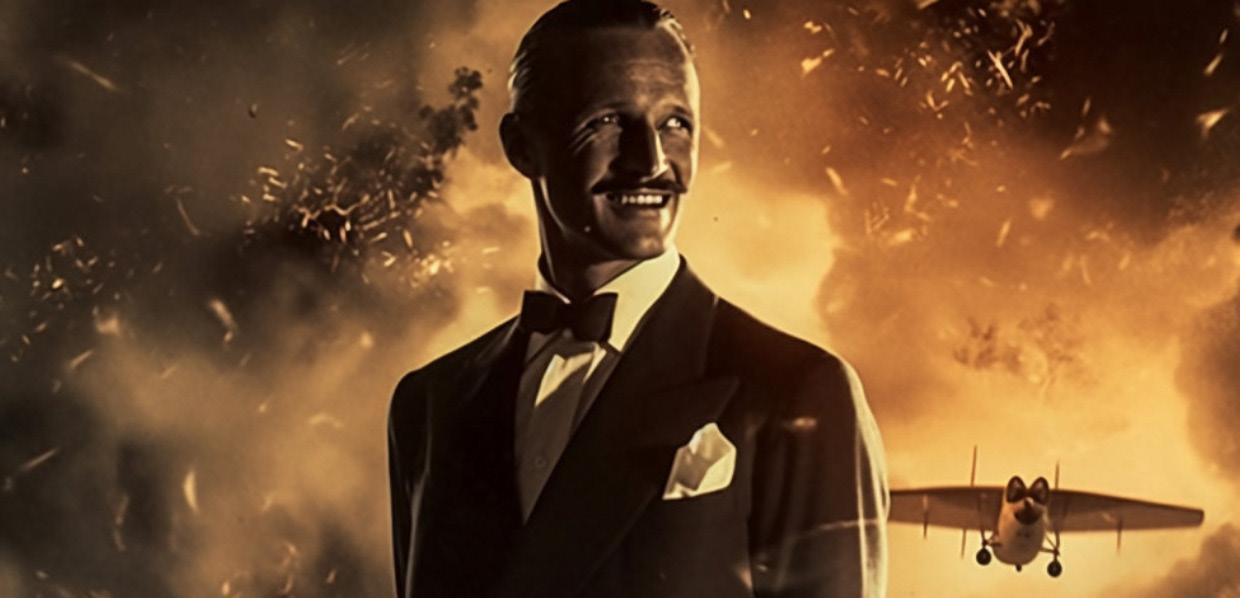
British supply lines were located in the north, but Allies wanted the Germans to expect an attack from the south. Maskelyne wrote, “The biggest drama in which I ever played a humble part was being played on a grand scale and villainy was already beginning to know that the final hour of reckoning was at hand.”
Wartime stalemate turns into victory
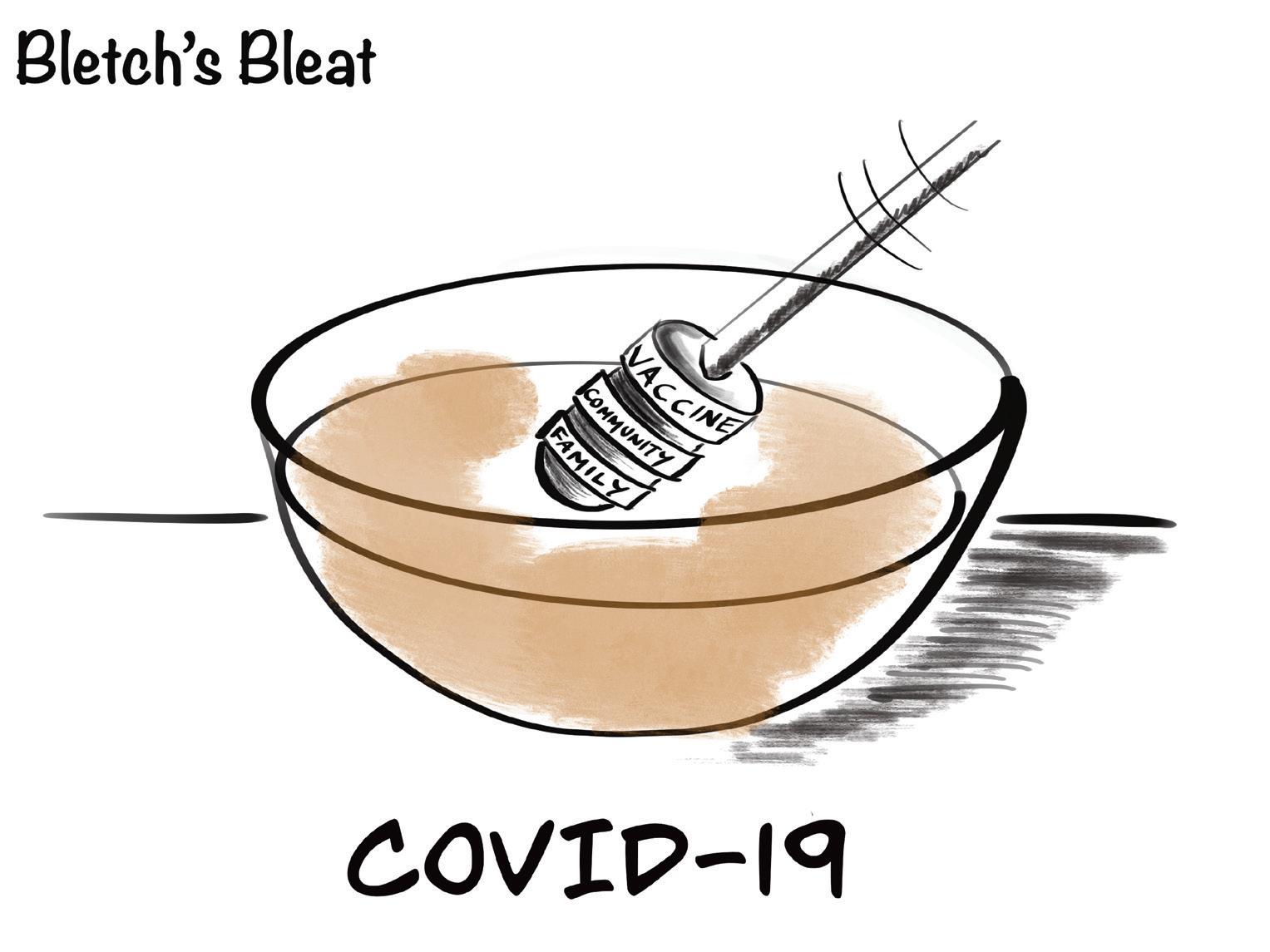
To create the illusion of an attack being planned in the south, “the gang” built dummy tanks, guns, aircraft, men, even a pipeline of steel cans.
This decoy army was so convincing that the Germans placed their main forces nearby. Meanwhile, Maskelyne masterminded the real deception: thousands of soldiers and tanks –camouflaged as dummy transports – were being moved in plain view of enemy forces. When the British attacked in the north, as planned, on October 23, Germany’s Field Marshall Erwin Rommel, known as the Desert Fox, had been outfoxed. The ill-prepared German forces retreated to Libya and the British savoured their first real victory of the war. This was Jasper Maskelyne’s last grand illusion in the desert, turning a stalemate into a tremendous victory for British forces, psychologically and militarily.
After the war, Maskelyne returned to England and to the stage. He asked for and received permission to continue to dress in British Army uniform when performing on stage again. Though he wrote an autobiography, Jasper Maskelyne never revealed his magician’s secrets. In fact, his subterfuges and war illusions are classified as top secret by the Official Secrets Act, not to made public until 2046.
opposite a weakness in the Italian front line, stopping an enemy offensive into Cairo before it began. Maskelyne was jubilant: “I danced with joy. War magic was coming into wartime fashion at last and I knew this was only the first example of what we could do.”
Judy Gruen is a writer, book editor and writing coach in Los Angeles. Her work has appeared in the Wall Street Journal, Chicago Tribune and New York Daily News, as well as many Jewish media outlets. Her most recent book is The Skeptic and the Rabbi: Falling in Love with Faith. Read more of her work at judygruen.com
United Israel Appeal will host Major General (Res.) Doron Almog, chairman of the executive of The Jewish Agency for Israel (JAFI) at its AGM and 2024 Campaign launch events in Sydney and Melbourne in November.
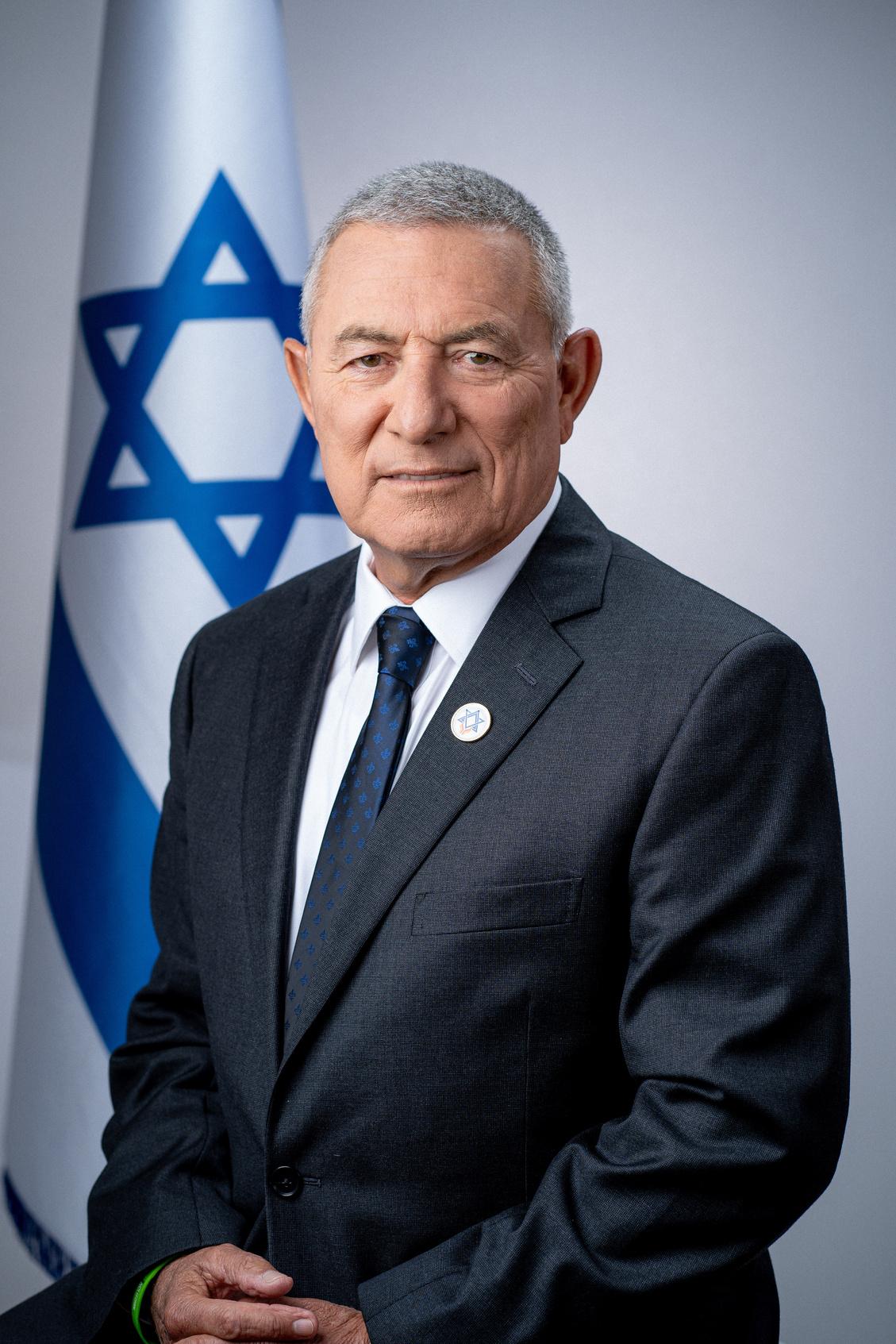
As a recipient of the 2016 Israel Prize, the country’s highest honour for lifetime achievement, Almog has a celebrated history as a leader in the Israel Defence Forces (IDF) and social activist. Beginning with his military days, Almog shone in his service in the IDF’s most elite units, rising to become commander of the IDF’s Southern Command. He led an operational task force against the terrorists who murdered the Israeli Olympic team in 1973. He commanded the first task force to land for the 1976 Entebbe rescue mission and commanded clandestine missions to bring Jews from Ethiopia to Israel. He led an elite paratroopers’ brigade during the first Lebanon War and led a company during the Yom Kippur War, during which his brother was tragically killed.
Almog went on to establish the ADI NegevNahalat Eran rehabilitation centre for people with severe disabilities, named after his son Eran z”l. The centre was the first of its kind in the Negev and is a pioneer in giving opportunities to youth with disabilities. Almog has also held roles on councils, committees and boards, serving diverse populations, including the Society for the Protection of Nature in Israel and the economic development of the Bedouin community in the Negev.
Almog holds an MA in International Relations from Haifa University and an MBA from Tel Aviv University. He is a former senior research fellow at Harvard and has published
Almog is no stranger to the efforts of UIA, showing his support as a guest speaker at the 2016 UIA Campaign. UIA is intrinsically linked with JAFI as, with support from global Jewry and Friends of Israel, funds are raised for some of Israel's most pressing challenges. In this way, both UIA and JAFI ensure that every Jewish person, no matter where they are in the world, feels an unbreakable bond to one another and to Israel and, whether through want or need, can come home.
These events provide UIA with a unique opportunity to report back to the community on the year’s fundraising activities and showcase the impact on beneficiaries in Israel. Preliminary announcements will also be made about the 2024 Campaign events.


UIA CEO Yair Miller OAM said: “UIA Australia is proud of the amazing support of our community during this challenging year. Our donors have continued to ensure we can support the influx of tens of thousands of Olim to Israel, as well as supporting programs across the country to uplift some of Israel’s most vulnerable populations. It is fitting that our guest in November is one of Israel’s national heroes. Doron Almog is not only a man who has served in many of Israel’s most significant military battles, but has also been a champion for social justice. As chairman of the executive of The Jewish Agency for Israel – our key strategic partner – Doron will be able to give us firsthand information about how Australian donors are making a significant impact on the ground in Israel every day.”
The annual Remembrance Day commemoration on 11th November remains a continuing tribute to all who served in wars and conflicts in which Australian personnel were involved.
It connects with all Australians, but has a special connection with our Jewish community and Victorian Association of & Servicemen & Women Australia (VAJEX).
Proportionally, the sacrifices of Jewish service personnel far exceeds the comparative statistics for Australia as a whole.
VAJEX is the symbol and torch bearer of the Jewish spirit that permeates the Allied fight for survival and freedom.
It is only fitting that some of the highlights, notable achievements and landmarks in VAJEX Australia’s history be recalled on Remembrance Day 2023.

In World War II, more than 3,800 Jewish men and women served in the Australian Armed Forces. That represented a

the 3rd St Kilda Scout Group, 129 or a quarter of Scouts enlisted. Almost all the male membership of Jewish sporting clubs joined the services.
Australian Jewish servicemen and women subsequently received 120 awards for bravery and conspicuous service during WWII.
Following the war, there was the urge to maintain contact between those who had served and that evolved into VAJEX, which was founded by Sir John Monash.

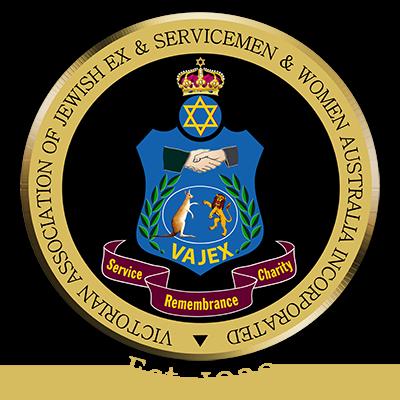
VAJEX membership has since grown to embrace a wide group of veterans from many countries that have made Australia their home.
LEST WE FORGET
To join VAJEX, go to https://www. vajexaustralia.org.au

MAJOR GEN (RES) DORON ALMOG CHAIRMAN OF THE EXECUTIVE OF THE JEWISH AGENCY FOR ISRAEL
A decorated soldier and social activist who led numerous task forces - against the Munich Olympic terrorists, the Entebbe rescue mission and missions bringing Ethiopian Jews to Israel He established a rehabilitation centre for children, teens and young adults with severe disabilities, named after his son Eran z”l
14 November 7.00pm
INCLUDING 2024 CAMPAIGN LAUNCH AND AGM
Jonathan Landes and his son Asher both keep bees and help others to do the same, whether it’s in the Berkshires or in Melbourne.

About a decade ago, Jonathan Landes, a father of three from Melbourne, took a trip to visit his son in the U.S. that changed his life. “My son, Asher, got into beekeeping 10 years ago,” Landes recalled. “We’d gone over [to the U.S.] to visit him and he was working on a rooftop farm. He told me, ‘Dad, you’ve got to get into it.’”
After watching his son create buzzing colonies of honeybees on Staten Island, Landes was hooked. Upon his return to Melbourne a few weeks later, Landes gathered up four of his lifelong friends and founded a small urban beekeeping company called Chevra Honey, named for the Hebrew and Yiddish word for a society or close-knit group. “There were five of us, a chevra,” he said. “We knew each other from [decades back] in youth movement. We thought the name was quite cute. And it stuck.” The idea was simple: In a city like Melbourne, where most people tend to live in houses with ample space and backyards, the chevra would help to set up beehives to encourage urban beekeeping.
The hives Landes sets up are made of good quality wood. Successful placement in the urban environment requires significant considerations. “You say hello and go meet the person [who wants to host the hive]. You do an evaluation of the garden and neighbourhood. You have to ask questions, such as whether there is anyone who is allergic to bees. You ask who the usual visitors to the house are, or if they have pets,” he said, listing the checklist he runs through with prospective hosts. “It’s not like a cat or another pet. People can get stressed about bees. You must be able to manage the colony.” To have a successful hive, the bees should not be too crowded and the weather has to be right. Bees prefer dry heat and if it is too windy and rainy it can affect the amount of honey produced by a hive.
Today, a decade on, Chevra Honey manages around 40 hives around Melbourne that produce high quality, organic, kosher-certified local honey. On average, each hive produces around 10 kilograms of honey per season.
“Beekeeping suits me,” said Landes. “I
really enjoy it. People are so nice. They are very engaged in making the urban environment healthy with bees. It’s a really good gig.”
Every spring, Landes starts to make his rounds of all the hives he manages. The honey produced by these hives is stocked in a range of local groceries, including kosher stores, high-end organic groceries and local delis. Landes also operates a small “honesty shop” from his home, where passers-by can purchase the honey-based products produced from the hives he manages, including organic honeys, beeswax lip balms and giftboxes.
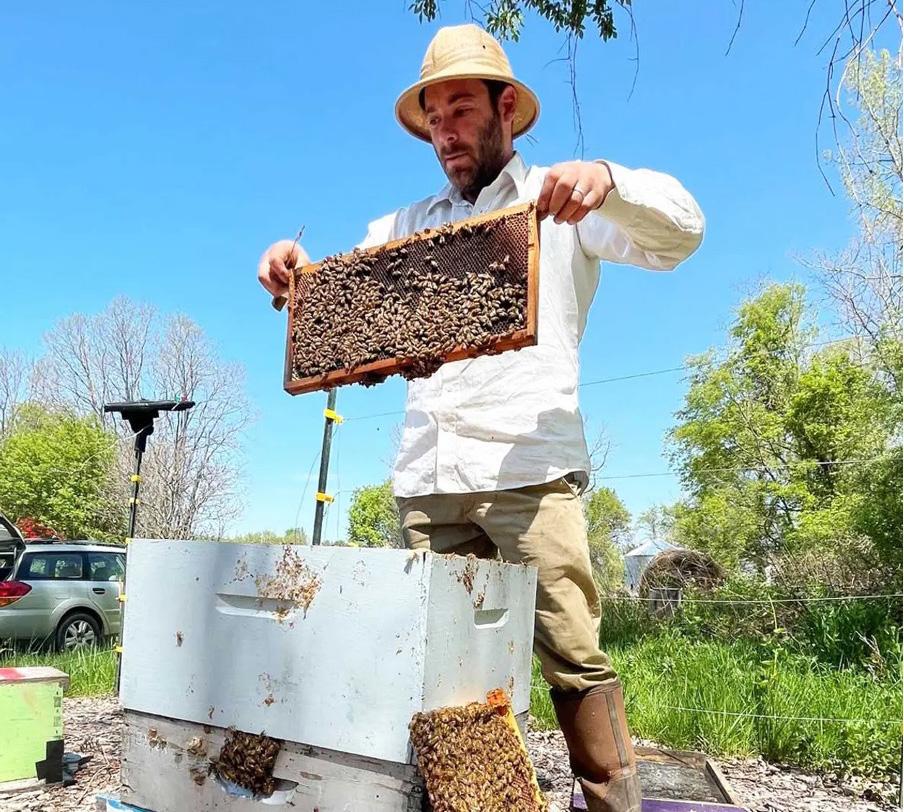
“The honey that is in the suburbs is a floral mixture, a midrange honey with midrange colours, like a really light amber to dark brown,” he said. “It’s an amalgam of all the trees and shrubs in the suburbs. If you were to take your beehives where there are state forests, where there are only red river gum growing by the river, the honey will be red river gum honey. That’s how you can name it. But in the suburbs, where honey comes from lots of different sources, it’s an amalgam of different nectars.”
By far the busiest time of the year for Chevra Honey is the lead up to Rosh Hashanah, when Landes collects honey from all the urban beehives he manages. This honey is then packaged and sold for the holiday. In addition to supplying shops and corporate orders, Landes supplies two local synagogues with honey and he helps his local rabbi jar honey. The meaning he finds in
beekeeping is long lasting. “Initially it was about bees and honey,” he said. “During COVID it was a nice meeting point for people. The other Sunday we had a gathering, for 30 people who carry our hives. People feel comfortable that we are doing this and that it’s part of the community; there is a sense of honesty about it. I’m working in this little area; it gives me some sort of value in what I do. It’s small stuff, but for me it’s meaningful. I think that plays a role.”
Landes’ son, whose full name is Asher Landes Silverwolff, chuckled when he recalled how his dad got hooked on keeping bees. “I started it,” he said. “He came and visited me in Staten Island and then he started his Chevra Honey.” Landes Silverwolff is still into urban beekeeping today and lives with his wife and child at the Isabella Freedman Jewish Retreat Center in the Berkshires, where he runs the Bee Resonance Project. These days, he makes his livelihood from the bees.
“We came up to the Berkshires to do a farming apprenticeship, to cultivate our relationship with the earth, to learn how to do urban farming,” he said. “I was done with the city life and ready to breathe the fresh air and cultivate the earth.” As part of his new business, he manages around 100 hives in the area.
A jar of Chevra honey, harvested from around 40 hives around Melbourne (photo courtesy Jonathan Landes)
“We manage hives for private residents for farms and organisations,” said Landes Silverwolff. “So folks will hire
us to install an apiary. I will take care of it and be responsible for it. They get the benefit of the honey. They get the surplus of honey and the ecological pollination and being part of the greater hive. It’s a movement standing for the bees.”
Landes Silverwolff is proud of the honey he cultivates through the bees he cares for.
“It's local, ethical, well-cared-for honey. It’s real. It tastes real,” he said. “When you buy honey in the supermarket, it’s liquid, it’s cooked. It gets pasteurised and you lose all the beneficial bacteria. The medicine. My honey tastes like the flowers of the season and the region.”
Like his dad, his busy time takes place around Rosh Hashanah and he is keen to continue educating the community about the importance of caring for bees. “At the moment, it’s the most vulnerable time in our recent relationship with the bees,” he said. “There is more environmental pressure on the bees. Whether its pollution, air pollution, water pollution, exposure to pesticides, insecticides, neonicotinoids that get washed into our waterways. There has never been more pressure. Folks can hire us to install and take care of bees. That’s what we are doing. It’s really beautiful that I can support the hives. They are my hives. My community.”
This story originally appeared in Tablet Magazine (tabletmag.com) and is reprinted with permission.

I recently returned from Israel. I’ve lost track of what number this visit was, but somewhere around my 15th. In recent years, I had been visiting annually, except for an involuntarily imposed exclusion due to COVID-19. This was my second visit since the borders reopened. I represented the Australian Jewish Association (AJA) in a series of meetings with politicians and other leading figures to update them on developments in Australia and to seek advice.
I was welcomed to the Knesset by Ohad Tal, newly appointed co-chair of the Australia-Israel Parliamentary Friendship Group, in its first meeting with an Australian Jewish group. In between meetings, I had a chance to catch some lively Knesset debates. The change of government is evident, with large groups of religious Jews wandering the corridors. I was recruited for a Mincha minyan. This reflects changes in Israel’s demographics, as the country has moved to the Right and away from its socialist founders’ views in recent decades.

Due to my work, naturally, my visit was focused on politics. In Australia, much has been made of protests against the Israeli government’s judicial reforms. I was curious to gauge opinions in Israel. I was reassured to find that the Israelis I met were supportive of the government,
although there was frustration at the slow pace of implementing pre-election promises, like judicial reform. Most of my stay was in Jerusalem and despite traveling widely in the city and in Judea/ Samaria, I saw no signs of the muchhyped anti-government protests.
More than once, I heard variations of the phrase, “The Right always wins government, but they never win power”, as people expressed frustration with the fact that despite the majority of Israelis consistently voting for Rightwing parties, unelected institutions like the Supreme Court, universities and the media continue to be dominated by the Left. No doubt had I spent more
time in Tel Aviv or Left-leaning areas, my experience would have been different, but it really highlighted for me the reality of ‘two Israels’.
A highlight of my visit was a trip to Gush Etzion that I took with leading international lawyer Professor Eugene Kontorovich. Among the topics we discussed were developments in the Labor Party surrounding possible recognition of ‘Palestine’, an issue in which Kontorovich is an expert. The visit became even more meaningful when we visited the lookout established in memory of Ari Fuld, who was murdered in a terrorist attack shortly after the Australian Jewish Association brought him to Australia.
I am always sensitive to distortions of history, particularly the simplistic and false comparisons of Israel with apartheid. My family had a brief sojourn in South Africa after my grandparents fled Nazi Germany in the late 1930s. They met in Johannesburg, but my grandfather saw no future in race-obsessed South Africa and my family left for Australia after the Sharpeville Massacre in 1960.
During my stay in Israel, I was on the lookout for the elusive Israeli apartheid, but I noticed nothing of the sort. I saw Arabs and Jews together at the beach, in the shops and in my hotel. One thing that I have noticed with each visit has been an increase in the number of Arabs frequenting pre-1967 Jerusalem, on the light rail, in the cafes and just doing their shopping.
Over the past few years, we have noticed a change in workplaces. There is now a greater opportunity to be employed part time. We have also noted that many people are doing more, while businesses are making do with less staff. The question that must be asked is whether all this makes for a better work-life balance?
Many experience high levels of stress and some burn out. Think back 12 months to Mark McGowan’s (ex-WA premier) resignation speech. He said he was burnt out and recognised he needed to make significant changes in his life.
Whilst the general population did not have the pressure of governing a state through the pandemic, we are nonetheless human and therefore vulnerable to experiencing stress.
How is burn out different to high stress?
Consider the definition coined by psychologist Herbert Freudenberger in 1974: “Burnout is a state of emotional, mental and, often, physical exhaustion brought on by prolonged or repeated stress. Though it’s most often caused by problems at work, it can also appear in other areas of life, such as parenting, caretaking or romantic relationships.”
To recognise whether you are heading towards or currently experiencing burnout, let’s consider the symptoms. You may not be aware that you are in burnout, but know that you have general malaise or don’t feel well and that can prompt a visit to the doctor.
Some of the physical symptoms of burnout are high blood pressure, poor sleep or insomnia, gastrointestinal issues, headaches, jaw clenching, teeth grinding, muscle tension and pain, and fatigue.
Mental and psychological signs include feelings of depression and/or anxiety, loss of concentration, dreading work, irritability and feeling like you are ‘drowning’. There is also an inability to experience pleasure, no time for non-work-related activities like hobbies or
The only incident where I witnessed racial discrimination was when I ascended Judaism’s holiest site, the Temple Mount. I observed how Jews were segregated and extensively searched, while non-Jews were free to pass. At all times, Jews were shadowed by aggressive agents of the Islamic Waqf who were on the lookout for any sign of Jewish prayer. All Jews were accompanied by a contingent of Israeli border police who made sure the visit was rushed.
After descending from the Temple Mount, I went to the Kotel, where the contrast was jarring. I witnessed a large group of pious Muslims being welcomed by Orthodox Jews, including employees of the Israeli Government agency responsible for managing holy sites.
While other Israel visits have focused more on family or leisure, this one was full of political meetings. I still found time to attend a beautiful wedding, as well as several museums (Menachem Begin, Israel Museum, Yad Vashem and the newly renovated Tower of David Museum), eat in several new restaurants and I even managed to get some sun on the Tel Aviv beach. I left feeling extremely optimistic about Israel’s future. My experience on the ground was vastly different to that portrayed in the international media. I trust the people of Israel to safeguard their democracy by exercising their right to vote and then respecting the mandate of their chosen government.
catching up with friends. Please don’t ignore the signs that your body is giving you. Develop an awareness of your body and how it is functioning. Ask yourself what the symptoms you are experiencing may be related too.
Burnout most often occurs when a person is not in control of how a job is carried out, be it at work or at home, or is asked to complete tasks that repeatedly conflict with their values. It also happens when someone is asked to work towards a goal that doesn't resonate with them, or when a person lacks support.
A health professional, care giver or parent may feel that they have less compassion to those in their care. Others may sense they can no longer do their jobs effectively. To counter burnout, having a sense of purpose, positively impacting others, or feeling as if one is making the world a better place are all valuable. Often, meaningfulness can counteract the negative aspects of a job. Other motivators include autonomy and a challenge.
When the above elements are absent, burnout may not be far away. So, it is imperative that we keep abreast of our situation.
As mentioned, jobs aren’t the only source of the chronic stress that causes burnout. Parents, partners and non-professional caregivers can also experience endless exhaustion, feel overwhelmed by their responsibilities, or secretly believe that they have failed in their roles.
These forms of burnout are, not surprisingly, referred to as parental burnout, relationship burnout and caregiver burnout.
Stereotypes and stigma, particularly that related to parenting, can make those suffering from non-work-related burnout feel as if they are to blame for the challenges they are facing. As a result, they often hide their struggles from others. If left untreated burnout in any form can have severe consequences. Discussing it openly with a person you trust is often the first step to getting the help you need.
Anne-Marie Elias is a psychologist in clinical practice for 25 years.
Growing up, the term 'Jew' became synonymous with 'monster', but it wasn't Israel who killed so many of my fellow Syrians.
In 2011, I moved from Damascus to Strasbourg, France. After dragging my heavy suitcases up to the fifth floor of an old building, I realised that the family hosting me had several pets, including the world’s largest cat. Finding accommodation in Strasbourg was a nightmare, therefore I decided to stay with them despite my pet allergy.
In less than 24 hours, I was wheezing and could not open my eyes anymore. The family released me from the leasing contract and the school where I was taking courses offered a solution for my emergency. A room down the road was available due to a last-minute cancellation. The room was in the Jewish quarter. Little did I know that, unlike such neighbourhoods in Beirut and Damascus, this one was actually inhabited by Jews.
Across from the house where I was going to stay for the following few months was a small grocery store. The first time I went there, I was happy to find all the ingredients I needed for cooking, even the spices I used back home.
While I was filling my shopping cart, I heard men entering the store. They greeted the shopkeeper in French, but then they switched to a different language, a language I did not know until I knew it was Hebrew. It was the language of animations we used to watch as children, whenever we got a signal while adjusting the antenna. I turned in shock and saw four bearded men dressed in black suits, wearing tall black hats and long sideburns. I dropped the shopping and ran out of the store, across the street up to my room. I locked the door and could not breathe.
A few minutes later, my brain kicked in, urging me to calm down. After drinking water and washing my face, I decided to go back and fix the situation, as I was going to pass by the store every day. My shopping was still where I left it and the men had gone. I went to pay and told the shopkeeper that I had forgotten my wallet earlier. He asked where I came from and smiled when I answered. I thought he understood what really happened, nevertheless, from then on he was kind to me.
After that incident, I wondered why I had a panic attack, although the men did not even look at me, let alone bother or threaten me. The answer turned my world upside down: I wasn’t afraid for my safety, but rather of sharing the same space with Jews.

Up until that encounter, I had never seen a Jew in real life, although the Jews were always at the centre of my existence; they were in the school history books, in American films we watched about Jesus, in Egyptian films as spies,
in reports about the Palestinians, in the news during wars as the aggressor. They were the antagonists with whom we are never to speak, or else.
When we were not yet five years old, my sister and I were in the back of the car when an announcement came on the radio. My dad raised the volume and slowed down. My mum’s jaw dropped and they both said nothing for a while. Our neighbour, the mother of a girl our age, was found guilty of spying for the Israelis and was sentenced to death with her sister. Eventually, my mother said: “How could they? After all the Israelis did to Lebanon.” My father was sceptical. He said that the allegations weren’t necessarily true, nonetheless since they were charged with treason, they were doomed.
As I grew older and Hezbollah stronger, the term “Jew” became, in my world, synonymous with “enemy”, or even “monster”. Time and again, Hasan Nasrallah vowed to protect us and drive all Jews out of our region.
Yet, those Jews I watched from my window in Strasbourg seemed nice. Also, they resembled me more than they did the French. Initially, I thought that the monstrous Jews that Nasrallah referred to must be those living in Israel. But the truth
slowly unfolded. Meeting Israelis always left me under the same impression: they are just like us, normal people. And just like us, they too are traumatised by war and would love to live in peace with us.
Because our reality in the Middle East does, indeed, include war-mongering monsters and they are those that vowed to rid the region of Jews, namely those that claim to be our protectors against the Israelis. The facts no longer accommodate their narrative.
Israel did not kill half a million Syrians. The Syrian regime did, with the help of the Iranian regime and Hezbollah. One would think that this alliance is ready to sacrifice its own people for the sake of the Palestinians. Except even Palestinian life doesn’t matter. The Syrian regime imposed a siege on the Yarmouk Camp for many years after 2011, causing more than 200 Palestinians to die of starvation. Many of those that survived the siege were feeding on grass.
The people of the Middle East realised in the past years that the IsraeliPalestinian conflict was a pretext for the Axis of Resistance to gain power in the region. It is time for them to learn that what they know about Israel and the Jews is wrong, and that peace can reign
and replace the senseless suffering. Yet for that to happen, you’ve got to roll up your sleeves.
Every Israeli needs to help reshape the perception of Israel in the mind of the neighbours. If you don’t, who else would?
Personal encounters are the best remedy for estrangement. You might not be able to visit Lebanon or Syria yet, however, you are able to meet Syrians and Lebanese on neutral ground wherever fate chooses. When it happens, don’t retreat out of despair or mistrust. Engage them and change their mind about Israel, like the shopkeeper in Strasbourg changed mine. All he had to do was to smile.
Rawan Osman is a Syrian-Lebanese peace activist, currently writing a book about her perception of the Jewish people and Israel before and after leaving the Middle East. Formerly with the PeaceComms Institute, Osman is studying Jewish and Islamic Studies at Heidelberg University, Germany. She is fluent in Arabic, French, English and German. She can be reached at rawan. osman@writing4peace.de
The Australian dream of owning your own home within a Jewish community has been out of the question for many … until now.
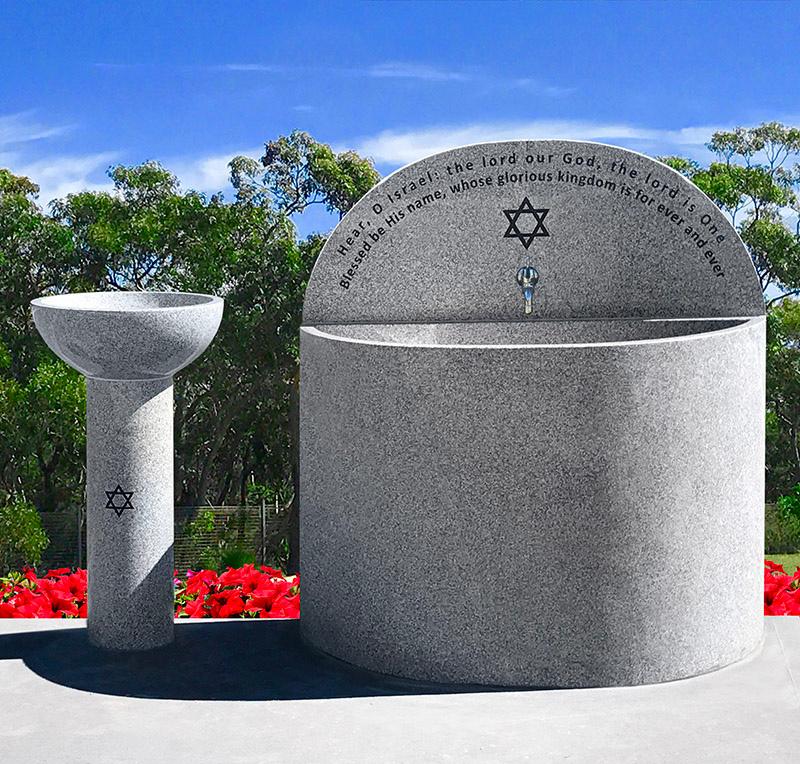
A new Jewish residential development in Fraser Rise, just over 30 kilometres northwest of Melbourne’s CBD, is continuing to take shape, following a significant milestone.

Community members behind the initiative acquired two adjoining blocks of land for a shule and a day-care centre in Westwood Walk, which is part of Fraser Rise.
The Harry Cohney Charitable Foundation was the major contributor to the acquisition of the shule block.


The developer – Westwood – has indicated that zoning laws would permit the building of a shule and a day-care centre, around which residential blocks will be able to be purchased.
The community is planning on having multiple bus services, so that parents and children can commute easily to work and school in the Caulfield area.
There are also plans for co-curricular programs for school-aged children.
Discussions are underway to ensure a specialised kosher supermarket will be set up in the area, along with an eruv (which would allow Orthodox Jews to carry on Shabbat) and a mikvah.

Families will have the choice of designing their own, sizeable new home or buying an existing house in the area, starting from $500,000. Rents in Fraser Rise start at $400 per week.
For three decades, the property market has boomed. Affordability has become much more difficult, locking many in the community out of Caulfield and the surrounding suburbs.
The financial benefits of joining this new community are considerable. Many families rely on their home as their asset to fund their retirement, as opposed to counting on government pensions.
This owner-occupied investment is also capital gains tax free. Historically, house and land packages have increased in value more than apartments.
Another significant plus in buying vacant land in Fraser Rise is only needing to pay stamp duty on the cost of the land, rather than on the combined value of the house and land. And, there are further incentives for first home owners.
More than 20 families have already committed to building in Fraser Rise, with three quarters of them post settlement. Those that bought two years ago have already seen capital growth of up to 20 per cent.
For further information, visit www.newjewishcommunity.com.au, phone Eli on 0425 740 518 or contact info@newjewishcommunity.com.au

During my time as a rabbi, I've written numerous articles, speeches and weekly newsletter pieces. One task, however, stood out as particularly meaningful and emotional – that of choosing the words for my late father's headstone. Crafting those few lines to capture a lifetime was a deeply significant endeavour.
Just a few weeks ago, I officiated at four consecrations on a single Sunday. At first glance, this might seem unrelated to the solemn act of inscribing a headstone. However, as I conducted these services, spending time focusing on the words on the various stones, it became clear that a headstone isn't merely a commemoration; it conveys a message about how to live.
At the top of the tombstone, you'll find the acronym “pay nun”. It goes beyond a simple "here is buried" to remind us that "here is a person". The inscription speaks to our shared humanity, crossing religious, cultural and experiential boundaries. It reminds us that, fundamentally, we all share the same human attributes – eating, breathing and bleeding. While we often seek common ground between religions and cultures, these two letters “pay nun” encourage us to recognise that our shared humanity should be enough to promote dignity,
respect and concern for one another. Moving down the stone, we encounter the Magen David – the Star of David. This symbol holds different meanings for different people, reflecting their unique connections to Judaism and personal interpretations of faith.
It serves as a reminder that we should embrace what Judaism means to us individually and take pride in our unique identities.
Shortly after Kol Nidrei this year, my eight-year-old son asked if we were expecting guests that evening. For him, attending the synagogue wasn't associated with fasting or solemnity, but with the joy of welcoming people into our home. This simple perspective highlights how faith, Yiddishkeit and community are woven into the fabric of our lives, even during ordinary and joyous moments.
Similarly, a congregant who recently acquired a shofar for her son found herself in a predicament when the young boy accidentally dropped the shofar at school. Fears arose that it might no longer be considered kosher, prompting his mother to seek guidance from me urgently. Fortunately, the shofar remained unscathed, exemplifying the profound significance of Judaism in the young boy's life. The Magen David encourages us to reflect on how this symbol manifests in our daily lives.
Next on the tombstone is the person's name. The name etched into the tombstone carries immense significance. It is said that the greatest crown one can attain is the crown of a good name. However, this crown is not self-bestowed; it must be conferred by others. How do we earn such a crown? It is earned through a lifetime filled with acts of kindness, compassion and consideration for others. I recall a heart-warming story of a rabbi who encountered Wally from the Where's Wally? books sitting on the side of the road, looking forlorn and dejected. The rabbi asked why Wally was feeling so down. Wally replied that everyone was asking Where's Wally? but no one was asking How's Wally? Sometimes, we become so engrossed in searching for
what we desire that we forget to enquire about the wellbeing of others.
The tombstone also displays the dates of birth and passing, along with the names of loved ones – a poignant reminder of the relentless march of time and the profound importance of family bonds. It's a sentiment often expressed by those nearing the end of their lives –the yearning for more time, especially with loved ones. I was deeply moved by a story I heard about a rabbi serving a large community who confronted a profound dilemma leading up to Yom Kippur. Faced with the choice between tending to his congregation on the most significant day of the year or attending his grandson's briss in a different city, he chose family. That Kol Nidrei night, he left a note on each congregant's seat, explaining that for years he had emphasised the importance of family. Now, he was living up to the values he had been preaching. Tragically, he passed away six months later. This story underscores the profound significance of family values and the realisation that time doesn't wait for anyone.
Lastly, the tombstone bears the acronym “tehay nishmato tzerurah betzror hachayim”, which translates to "May the soul be bound in the bond of eternal life”. It serves as a poignant reminder that, ultimately, we are souls inhabiting physical bodies. While the pain of loss can be overwhelming for the remaining family, this acronym assures us that the souls of our loved ones persist beyond the physical realm. The soul lives on and we have the capacity to lead our lives in a most meaningful and profound manner.
Jewish Answer: KEDUSHA (KEDUSHAH). Here is a list of some common words (“yes”, we know there are more words in the dictionary that can work, but these words are common in today’s vernacular): DUDES, DUKES, HUSKED, HUSHED, HUSHES, HUSHS, KUDUS, SHAKSHUKA, SHUSH, SHUSHED, SHUSHES, SUEDE, SUKKAH, SUKKAHS and SUSSED.
Questions/comments – email Yoni at koshercroswords@gmail.com


 BY RABBI DR BENJI LEVY
BY RABBI DR BENJI LEVY
On 30th April 1977, soldiers of the Kampuchean Revolutionary Army attacked Vietnam. Over the following months, thousands of civilians were killed and thousands more fled in boats, seeking refuge from the war.
A few weeks later, while sailing in the South China Sea, an Israeli ship received an SOS message. The captain, Meir Tadmor, brought aboard 66 Vietnamese men, women and children who were found in a small, leaky boat with almost no food or water. The Israeli ship was the only one to heed the distress call, after many others had ignored it.
Ten days later, on 20th June, Menachem Begin was sworn in as Israel’s first right-wing prime minister. He began his confirmation speech with the following words:
“My first action as prime minister tomorrow will be to instruct that asylum be granted to the Vietnamese refugees. We all recall the ships of Jewish refugees in the 1930s, which wandered the seven seas, seeking entry to a specific country or various countries and were denied access everywhere. Now there is a Jewish State. We have not forgotten. We will act humanely. We will bring those unfortunate refugees here to our country after our ship has saved them from drowning and we will grant them a haven ...”
Human rights are such a fundamental part of Judaism that it was natural that
Begin’s first act was to fly the Vietnamese refugees to Israel. The Jewish State was the first country in the world to accept refugees from this wartorn country.

This action of the Israeli government perfectly encapsulates the Jewish approach to what has become known as human rights. In Judaism, inherent in the commandments are obligations. The focus is not on the rights of others, but on our obligations.
The difference between rights and obligations is like the difference between night and day. If my focus is on the rights of someone else, I must make a value judgment about their plight, their needs and how helping them will impact me. If my focus is on my obligations, I must help others because it is my responsibility. It is not fundamentally an act of altruism, but one of selfishness. Helping others is what allows me to fully express my humanity.
This is clearly expressed from the beginning of the Torah. Adam and Eve had two sons, Cain and Abel. The Torah describes how Cain became jealous of Abel and wanted to harm him. Then God spoke to Cain.
He did not tell him to spare Abel’s life because Abel was deserving or had a right to life. Rather, the focus was on what his actions would do to Cain. “If you do good, you will be elevated. But

care for foreigners, orphans, widows and the poor. Throughout history, Jews have so often been discriminated against, or even murdered for their beliefs. For this reason, they have a natural desire to protect those who are suffering. Over three millennia ago, the Israelites received the Torah at Mount Sinai, with its narrative of creation and the importance of caring for others. When the Israelites accepted the Torah, they embraced the values of caring for others, protecting the defenceless and human rights. These values of the obligation to care for and protect others have remained fundamental to Judaism and informed Jewish decisions for more than 3,000 years.
This is what it meant to be Jewish from the earliest days until today.
1 Bereishit 4:7
2 Sanhedrin 37a
3 “Logic of the Heart, Logic of the Mind” (1991) p62

if you do not do
good, sin will be waiting for you.”1
After Cain murdered his brother, his infamous rhetorical question, “Am I my brother’s keeper?” shows that he fundamentally misunderstood his obligations to his brother and to himself. “Yes” is the unstated answer. “Yes, you are absolutely responsible for your brother and for every other person in the world.”

In fact, the obligation to look out for others is expressed even earlier in the Torah.
The foundation of the Jewish belief in our obligation to others begins with the creation story, where Adam and Eve, the parents of every person of every race, were created “In the image of God”.
The Talmud states: “For this reason, Adam was created alone, to teach that whoever destroys a single soul is considered as if he destroyed the entire world. And anyone who sustains a single soul is considered as if he sustained the entire world. And for the sake of peace, so that no person can say to another, ‘My father was greater than your father.’ ”2
The 20th century rabbi, Ahron Soloveichik wrote: “This key concept of the dignity of all human beings constitutes the basis of human rights. The maxim of ‘Man was endowed by his Creator with certain inalienable rights’ was not an innovation of the founders of the American republic. These men were impressed with the doctrine of human rights, which flows naturally from the concept of ‘the dignity of man’ and the ‘image of God in which He created Man’, as they knew from their biblical background.”3
This version of obligations rather than human rights was paramount in Judaism since its inception as a nation. Forged in the crucible of Egyptian slavery, the
nation and its laws strongly reflected concern for the wellbeing of others, especially the weak and downtrodden. The Torah enjoins Jews to specifically
Rabbi Dr Benji Levy is a cofounder of the philanthropic advisory Israel Impact Partners, Keshev mental health center and an Al summarizing start-up called Tanna. He is the former CEO of Mosaic United and Dean of Moriah College, and he teaches globally in person and online at @RabbiBenji. For more information visit www.rabbibenji.com
There are many journeys that people take throughout their lives. The journeys help to bring perspective. Once you move to a new place, you are able to see things afresh. When you leave a place you used to live, whether you loved living there are not, there will always be a sense of nostalgia and longing for some of the aspects of that experience. I am reminded of the expression absence makes the heart grow fonder.
My grandfather used to reminisce about growing up in pre-war Bratislava. He missed the sweets of his childhood and the Talmud Torah of his youth. He sang the songs of his childhood with relish. One time, when I asked him why he missed everything so much, despite the antisemitism that was baked into Europe at that time, he was pragmatic. “It’s how I remember my childhood,” he said.
The feeling of fondness and belonging are with us when we re-start reading the Torah and meet our Patriarch Avraham at the beginning of Genesis.
After being instructed by G-d to do so, Avraham moves at the advanced age of 75.
This is a monumental undertaking for an elderly person, especially when
you take into consideration that the longer one lives in a place, the more connected one feels to that place and the more difficult it becomes to uproot one’s life. And yet, Avraham moves to the Land of Israel.
I admire Avraham’s courage. Still, living in the Land of Israel is a tremendous blessing. There are certain mitzvot that can only take place there that Jewish people in the diaspora will never be

able to participate in. Mind you, Israel has challenges that are not present in countries like Australia. In other words, there are also obstacles that can prevent people from moving there.
Interestingly, in the original Zionist manifestations of Israel, a diaspora was not assumed to continue to exist once a Jewish State was established. However, as we know, despite Israel being central to Jewish worship and practice, there are
Attending the recent book launch of "Elegy for an Elephant" by author Ryan Abramowitz was an emotionally charged and deeply moving experience that left a lasting impression. Ryan's willingness to publicly share his personal journey of loss, pain and healing was not only courageous, but also profoundly and palpably authentic.
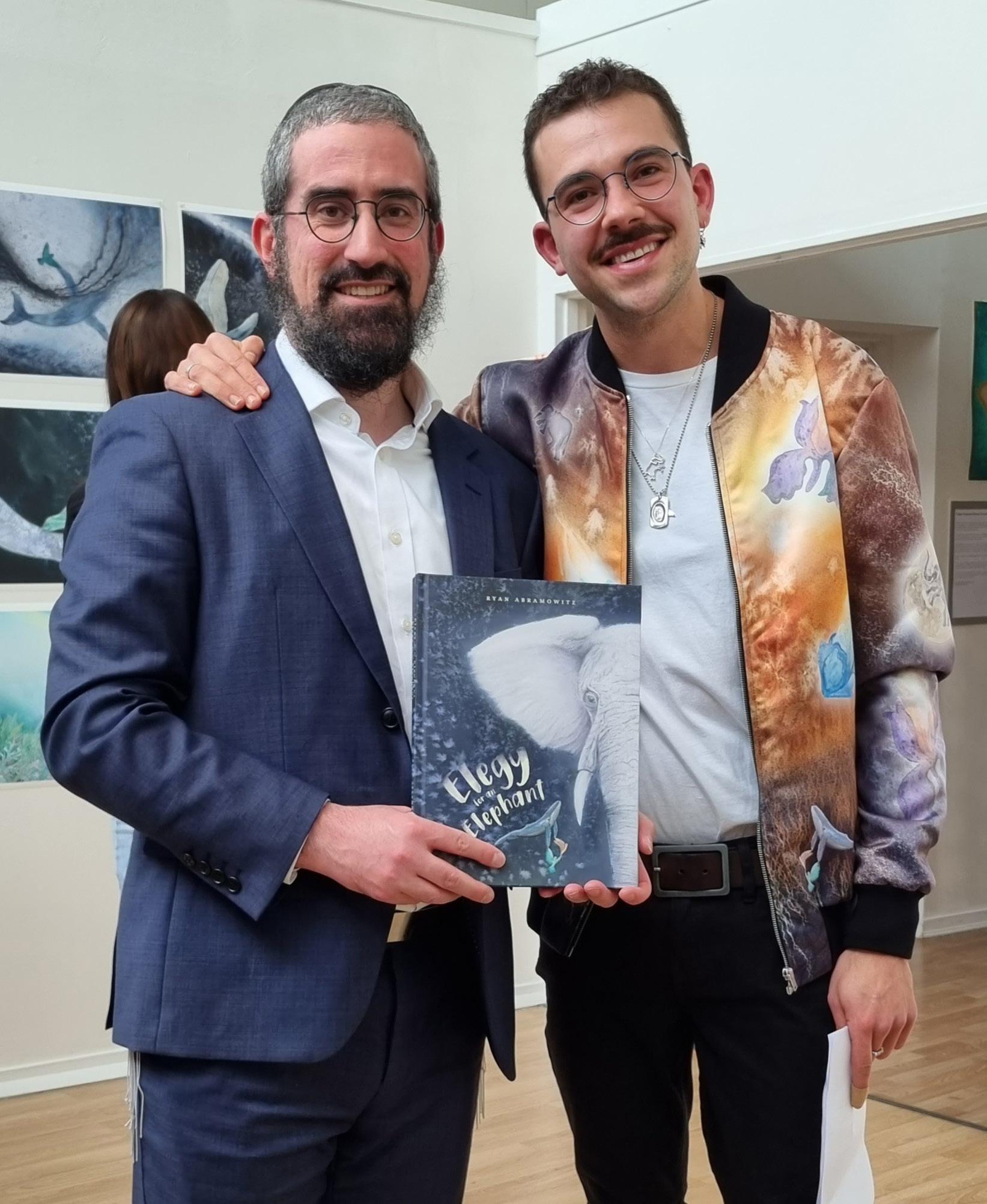
The title of the picture book carries a powerful metaphorical weight. Suicide, as Ryan eloquently described it, is the proverbial elephant in the room of our society. It is a pervasive issue that affects many lives, yet it remains shrouded in stigma and silence. The choice of such a poignant title encapsulated the essence of his work – addressing the unspoken pain that plagues so many.
As he spoke about the loss of his father, he bared his soul, allowing us to glimpse into the raw emotions that had driven him to create the book. His vulnerability was a stark reminder that behind every statistic, there is a human story filled with complexity, love and heartache.
What struck me most was Ryan's commitment to destigmatise suicide and promote open conversations about mental health. He has transformed his personal pain into a powerful tool for change through his artwork and writing. He has crafted a safe space for dialogue, where others that have suffered in silence can find solace and understanding.
The event itself was a testament to the community of support that rallied around Ryan and his cause. Friends, family and community came together, not just to celebrate the publication, but to honour the memory of Joel and all those affected by suicide. It was an experience of tears, laughter and shared humanity.
Ryan's decision to share his story has undoubtedly created a ripple effect, encouraging others to open up about their own struggles and seek help without fear of judgment. He has broken down barriers, inviting us to confront the truth head on, inspiring hope, empathy and change.
Elegy for an Elephant can be ordered online at www.narrativesofnature.com
Ryan will be donating 18 per cent of all profits to Lifeline, Movember and Support After Suicide.
still many millions of Jews who choose to live outside the country and don’t intend to move there.
And yet, there is a fearlessness about what Avraham does. If only we could all be as courageous. So, let’s take a moment to see how we can challenge ourselves … to uproot our comfort and work on ourselves and the world around us.
BLP Kosher, aka Benjamin Landy Pavlon, is breaking music barriers and spreading his Jewish pride.
Many of the people instrumental to the success of hip-hop are Jewish (Jerry Heller, Lyor Cohen and Rick Rubin, just to name a few). A number of Jews – like Drake, the Beastie Boys and Mac Miller –have become prominent rappers.
But it’s not often that a Jewish artist rises to prominence in hip-hop, a predominantly African-American genre, let alone a rapper with such an overtly Jewish aesthetic.
That’s exactly what BLP Kosher has managed to do.
What’s a BLP?
Hailing from Broward County, Florida, BLP Kosher, aka Benjamin Landy Pavlon, was born in the year 2000. Pavlon grew up in a Jewish home and while he didn’t grow up observant and, ironically enough, didn’t keep kosher, prayer was always an important part of his life.
“I would pray randomly at a bus stop, or when I’m doing something like jaywalking, I’ll start praying,” Kosher explains in an interview. “I would live a non-religious lifestyle but still pray.”
Over time and to deal with the losses he experienced in his life, Shabbat observance became important for him as well.
On a whim, he took up rapping during lockdown in 2021 and began to steadily release his first tracks on Soundcloud with his mentor and fellow Jewish rapper Jew Shiesty. Jew Shiesty was also responsible for thinking of Kosher’s stage name after Shiesty told him to keep the BLP (his initials) as a call back to his earlier skating days.
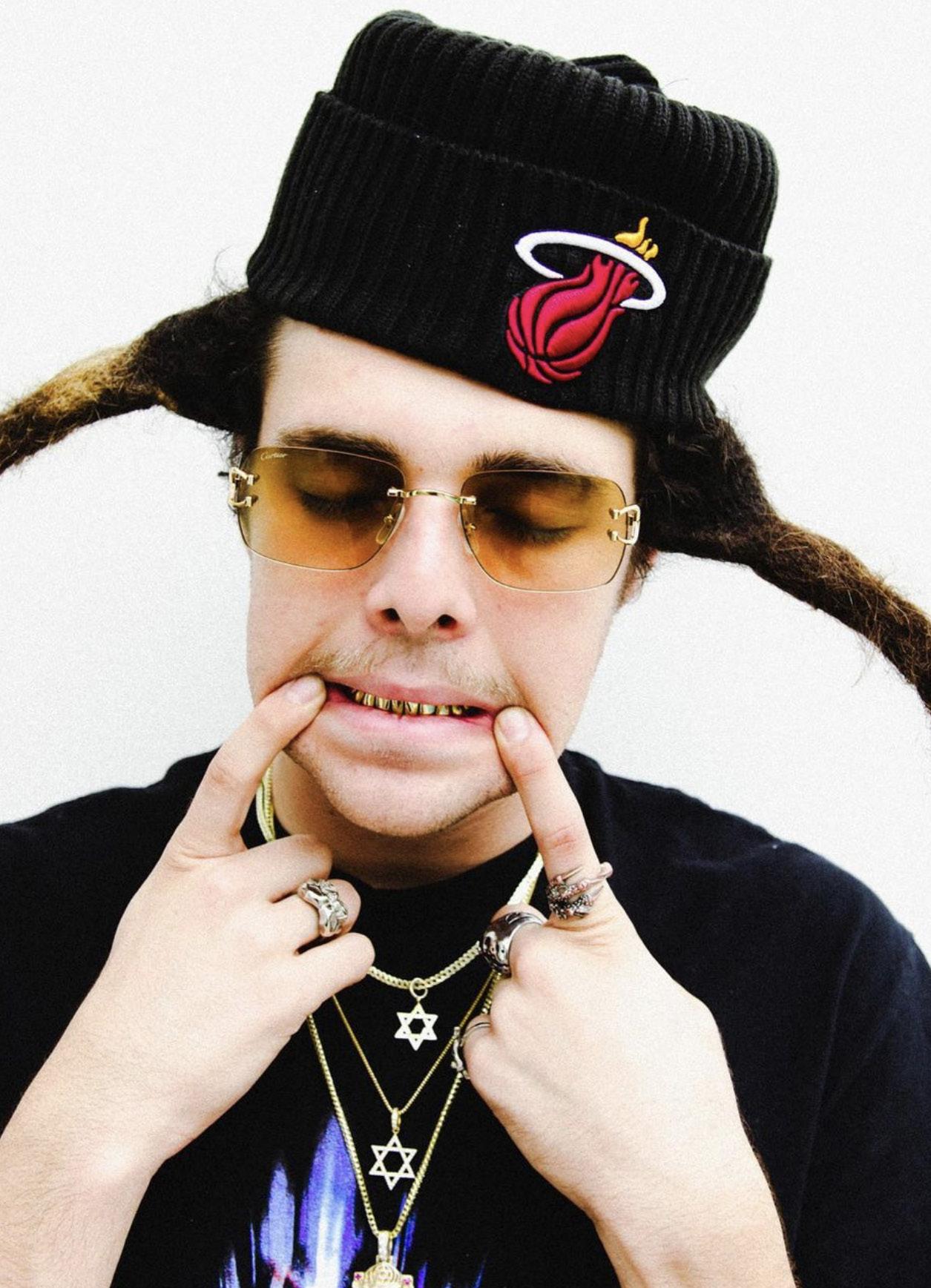

Since he couldn’t go outside and skate like he usually did, rap was a fun way to pass the time while the world seemed to be ending.
Being exposed to Hip-Hop as a teenager, he cites his biggest inspirations as being late rapper XXXTentacion, Lil Wayne and even Camila Cabello.
His friends realised he had a unique charisma and sense of humour that he conveyed in his lyrics and they convinced him to take rapping more seriously. He began to develop a following, those fascinated by his oddball aesthetic and hilarious punchlines, many of which involved his Jewish heritage and his affinity for skateboarding.
Even before he started rapping, he walked around wearing a Bukharian Kippah, a star of David chain, and grew out small payot (a Jewish custom of growing out the sideburns). His now
“The internet is going to be the internet and they’re really not going to understand. But I know what it means to me. So, I might as well just be myself and include skateboarding and being Jewish.”
He explains in an interview with Complex Magazine that the reason he is so aggressively proud of his Jewish identity is it is his way to stand up to the people who despise him even before listening to his music just because he’s Jewish. When he was starting out, he shares that “There were people who would crack little jokes and say some Nazi garbage. I tried to laugh at them because, at the end of the day, that’s fluff. The goal is to change minds and
for witty one-liners and a real breadth of knowledge in pop culture and Jewish tradition. Despite flying in the face of every existing trend and norm, he has released songs with some of the biggest producers and rappers in the world. He’s received the respect and admiration of many of his peers and has slowly but surely built a name for himself as an independent artist. All while treating his success with the utmost humility and graciousness.
While his aesthetic may look brash, he’s humble, wholesome and thankful for being given the opportunity to do some real good in the world. Kosher’s loyalty to his friends and his heritage is another one of the things that makes him such a unique figure. After losing two of his closest friends, including Jew Shiesty, his mentor, BLP isn’t a stranger to grief. He has continued pushing on in honour of the friends who helped get him to where he is now. He feels that he has a responsibility to continue on the path he started and eternalise their legacy.
iconic hairstyle came about in a rather beautiful way. Charmane, a close friend of Pavlon's, was grieving his late girlfriend, who had recently passed away. In an attempt to help, Pavlon taught him to say kaddish. Thankful for the emotional support and empathy BLP showed, Charmane decided to return the favour. He used a crochet hook to turn the curls into the two small wicks that would soon be his calling card and a way for him to display his Jewish identity fully.
From the moniker and the Jewish jewellery to the hairstyle and the deadpan delivery, BLP Kosher sticks out in more ways than one. Few rappers have incorporated Judaism into their aesthetic and lyrics as much as BLP has. But he says he was never worried about a negative reaction to his identity.

views,” he says. While Deerfield County was never a hotbed of antisemitism, or “anti-dreidel,” as Kosher calls it, he experienced his fair share of hostility.
One such incident occurred on the bus to school where a bully called a young BLP Kosher a kike. He retaliated violently and the bully’s nose began to bleed profusely. “I was crying because I hurt him. I didn’t mean to. I didn’t want to do that. The kid was evil, but it hurt me to hurt him. I couldn’t sleep after knowing that I really injured someone,” Kosher recalls.
His songs are laden with Jewish lyrics and messages and while they aren’t all the most family-friendly they are all deeply inspired by Jewish themes. Just turn on one of his songs and you’re bound to hear lines like “No Lashon Ha'Ra, please” or “They throwin' shade like Sukkot.” BLP clearly has a penchant
He explains that in his hometown of Broward pride can get you killed, but for Pavlon, that’s precisely what fuels him to increase tolerance and challenge societal norms and people’s expectations, even if they aren’t ready for it.
In an interview recently, BLP Kosher waxed poetic on purpose. “Never judge a book by its cover,” he says. “Everybody is here for a reason and I know the reason I’m here and the stepping stones I’ll use to get there.”
In August he released his second album, “Bars Mitzvah”, to much fanfare with some of his most viral singles yet in “Mazel Tron” and “Special K”.
While it’s anyone’s guess as to where BLP Kosher heads from here, one thing is for sure: he will continue to represent Jews all over the world with his funny punchlines, skateboarding references and Jewish pride.
ARYEH GENGER COURTESY: AISH.COM
“I would pray randomly at a bus stop, or when I’m doing something like jaywalking, I’ll start praying.”
Last year, Courage to Care CEO Mike Zervos ran a marathon to raise funds for Courage to Care. He’s at it again this year and he would love your support. This year, there are two ways you can join him in the Race Against Racism.


The first is by sponsoring him.
Otherwise, during October you can sign up and complete your own challenge, and then ask your family and friends to sponsor you and help spread the Upstander message.
Among some suggested activities you may wish to partake in are:


• A certain number of yoga, gym or dance classes for the month;

• Reading five books in two weeks;
•Calling 10 people you haven’t spoken to for at least six months; and/or
• Completing daily acts of kindness.
Courage to Care’s Upstander programs educate primary and secondary school students about the dangers or racism, prejudice, discrimination and bystander behaviour. They draw inspiration from real life acts of courage.

Delivered by skilled and dedicated volunteers, they feature inspiring testimonies from Holocaust survivor speakers.
Here is your link to either sponsor Mike or to break out and do something on your own: https://join-marathon-mikesrace-against-racism.raisely.com

Their father was big and strong.
He could be fun, but more often than not he was scary, angry, brutal and dogmatic. He couldn’t land a job and so money was always tight.
He drank. After surviving WWII, which included being shipwrecked and a prisoner of war on the Thai-Burma Railway, he had PTSD.
His wife, their mother, stood by him –constantly pointing to what he had been through – even though she, too, was treated badly.
This is the story of Jack (Ian Bliss), Martha (Maude Davey) and their five children.
Jill (Lucy Goleby) was the oldest, while Johnnie (James O’Connell) was the senior of the three boys.
Twins Mouse (Zachary Pidd) and Door (Benjamin Nichol) were the other two lads.
And then there was the youngest member of the family, Christine (Angourie Rice).
Academically gifted and self-confident, Jill always knew her father for what he was. She even tried to convince her mother to leave him.
Johnnie quickly became dad’s whipping boy. He was always looking to catch out Johnnie and belittle him.
He couldn’t tell the twins – who were inseparable, much to his chagrin – apart.
Youngster Christine often leapt to his defence, even though his behaviour was
This is theatre on a knife’s edge.
Ian Bliss ensures that Jack is realised as a ticking time bomb. He is ferocious and frightening and, on occasions, vulnerable … sinking.
As Jill, Lucy Goleby knows only one way – fighting fire with fire. She doesn’t back away and the consequences are dramatic. Angourie Rice is equally mighty as the young family enthusiast, cum narrator Christine, who prefers the glossy picture.
Benjamin Nichol excels as the deeply needy Door, with Zachary Pidd’s metamorphosis as Mouse is impressive.
James O’Connell grows in stature from the disparaged and downtrodden Johnnie as the plot unfolds.
frequently volatile and deplorable. She liked hearing his evocative war stories.
My Sister Jill, written by Patricia Cornelius and directed by Susie Dee, is a family saga examining the unrelentingly legacy of war.
The pair has worked together a lot.
They constantly challenge one another as they explore class and gender, shedding light on ordinary people facing life’s hardships. They are fearless and pose questions many have been too uncomfortable to tackle.
My Sister Jill, which has been adapted from Cornelius’ own novel, fits the mould.
It is part autobiographical, although the acclaimed playwright and novelist has taken significant creative liberties with the story.
Immersive and interactive theatre excites me. It always has.
We don’t see enough of it in Australia.
That is why I entered The Austral in Collingwood (a former theatre, cinema and roller-skating rink that dates back to 1921) with a heightened sense of anticipation.
Forty-three rooms, eight characters, with us – the audience – free to go where we want, when we want, over 90 minutes.
The theme is a subterranean adventure on board the submarine E.V. Nautilus, piloted by Captain Anderson (Sandro Colarelli).
After being led down a thin corridor littered with dozens of scuba tanks and donning plastic ponchos, we enter a room where the captain’s treasures are on display. Many of the antiquities are in Perspex cases.
We are invited into a decompression chamber, ready for our dive below the surface, complete with suitably eerie sounds.
Once “below”, the nooks and crannies of the underwater craft are ours to explore.
The crew consists of a ragtag bunch of odd bods and reprobates.
I have already referenced the captain. His only child, daughter Sandy (Bri Emrich) has never been to the surface or experienced life outside the vessel.
Her best friend, confidante and protector is lobster Claude (Chloe Towan).
Showing more than a passing interest in Sandy is the dashing Chan (Jeremy Lloyd).
Stefano, the mustachioed head chef (Kristian Santic) has a Snidely Whiplash quality about him.
The latter was a fictional character that appeared as the main antagonist in The Rocky and Bullwinkle animated television series.
The half human Sea Creature (Callum Mooney) appears menacing, but is shy.
Salacia (Meg Hickey) is the tantalising sea witch, a purveyor of the dark arts. And finally, there is the lithe and long-
It captures the spirit and struggle of a generation of Australians post Second World War. Although compelling, it is not an easy watch, nor should it be. The subject matter and its treatment see to that.
Pain and fear are constants.
The play has been superbly written, directed and performed.
Cornelius’ gritty work has rarely graced the stages of major theatre companies. More is the pity.
In this case, much credit goes to MTC, which supported and championed the creation of My Sister Jill through its NEXT STAGE Writers’ Program.
The piece is peppered with explosions and meltdowns, with us – the audience –waiting for the inevitable next eruption.
Maude Davey portrays the stoic wife Martha, who has put up with so much and is forever tested, with conviction.
Marg Horwell’s set consists of the outline of a rundown home, along with an authentic 1953 FX Holden. The latter had seen better days when purchased by MTC, but was fixed up and sprayed light green by the talented production team.
Horwell is also responsible for the costuming, with much fun to be had dressing adults as children of the ‘50s. With lighting by Rachel Burke and composition and sound from Kelly Ryall, My Sister Jill leaves an indelible footprint. Its emotional resonance is striking.
It is playing at Southbank Theatre, The Sumner until 28th October, 2023.
the chef and Chan fighting in “the cage”, and musical interludes. In fact, the show culminates with a cavalcade of music, song and dance on board the biggest and broadest wooden table I have ever seen.
These talented and versatile artistes are undoubtedly melodious.
Written by Kirsten Siddle and Helen Cassidy, while the former is also the creative director, Broad Encounters’ Love Lust Lost is an experience to savour.
Well designed (by Mike Finch, Josh McIntosh and James Browne) and choreographed (by Jo Cotterill), it is enticing, imaginative, esoteric and provocative.
Think sight, sound and smell and immersing oneself in the magic, mystery and mayhem.
limbed charmer and seducer Trink (Sho Eba).
The E.V. Nautilus is a potpourri of spaces – from food preparation areas and living quarters to an herbarium, a child’s, diminutive jumping castle and a beauty parlour.
There is a love swing and a room for sexual deviants, plus a decidedly nasty looking operating theatre, with blood splattered walls and floor and much more besides.
As we clamber up and down narrow staircases and move into the rooms, we interact with the cast, who perform a series of mini shows.
The captain spoke gibberish to us, we witnessed two disparate pole dancers,
The costuming by Melanie Gillbank and Laurie Verling certainly gets pulses racing.

Sound design is courtesy of Michael Theiler and Peret von Sturmer, with lighting by Jason Glenwright. The musical arrangements are the work of Mik La Vage.
Love Lust Lost follows the success of gothic hit A Midnight Visit, which ran for 16 weeks in Melbourne in 2019 and this promises to be another crowd favourite.
Playing at The Austral until 29th October 2023, it is also good for repeat visitors, insofar as the team behind it has nine hours of content that varies between shows.
For bookings, go to www.lovelustlost. com
From tales of profound journeys, captivating real-life mysteries to the unsung champions of yesteryear, the Jewish International Film Festival graces Australian screens again from 23rd October.
JIFF 2023 features 55 Australian premieres from 19 countries.
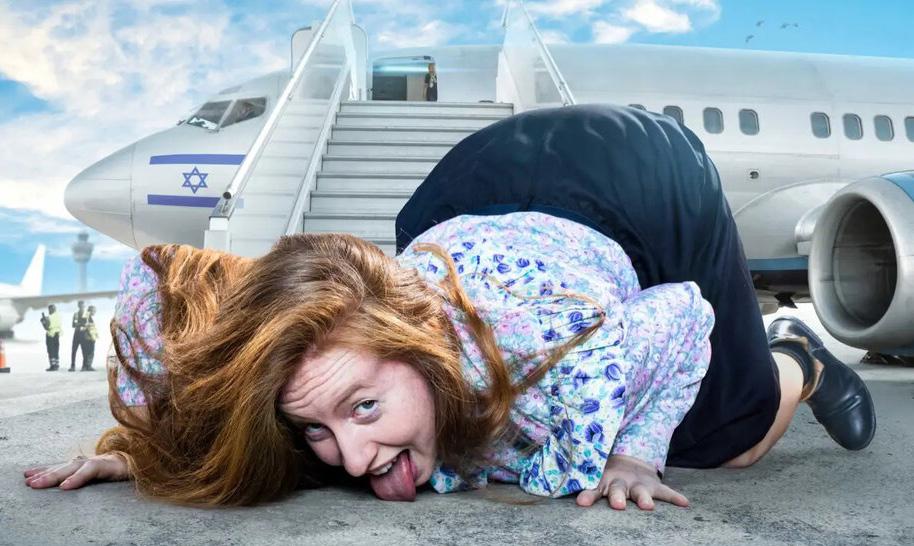
The program comprises 30 features, 20 documentaries, two television series and six short films, alongside a suite of live events.
"In a world where stories are our bridge to understanding, this year's JIFF is a testament to the timeless resilience and adaptability of the Jewish spirit," said artistic director Eddie Tamir.
Opening night
Launching JIFF 2023 is the Australian premiere of Matchmaking, Israel's biggest blockbuster of 2023. Journey with Moti Bernstein, an Ashkenazi who defies tradition for Nechama, a Mizrahi beauty. It is a romantic comedy, brimming with heart and humour, which won the Audience Award at the Miami Jewish Film Festival. Tickets include falafel, drinks and live music.
Australian stories
Revenge: Our Dad the Nazi Killer takes us back to the post-WWII era. Three brothers uncover their father’s suspected revenge spree against the Nazis. It is a tale that unwinds through Melbourne’s streets and buried wartime secrets.
journey of a Jewish stage actress torn between pursuing love and escaping the confines of the Warsaw ghetto.
Tzadik celebrates Red Army officer Nikolai Kiselyov's heroics, saving Jews from Nazi horrors in Belarus.
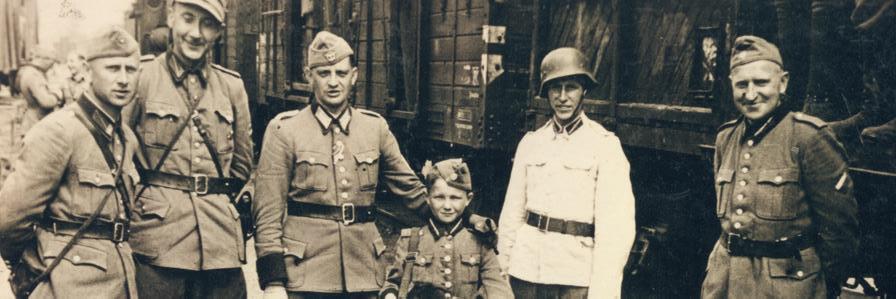
The dark corridors of history come alive in The Jew, as Mikhail Krasnitsky embarks on a vengeful spree against former death camp guards, offering a chilling look into post-war vengeance.
In its bold focus on romantic pleasures and quality of life amid barbarity, Filip breaks every cliché about the Nazi era and the Holocaust.

Filmed in Ukraine and presented in Yiddish, SHTTL paints a vivid portrayal of a bustling Jewish village on the brink of Nazi invasion, capturing the intricacies of life in the face of impending doom.
Set after the Six-Day War, Victory is an original musical that traverses the world of Neta Agmon, a rising actress who becomes blinded by fame.
The festival’s closing night film is The Jewish Nazi? It follows Alex Kurzem who, following the brutal massacre of his Belarusian family, was forcibly made "Hitler's youngest soldier" by a Latvian Nazi battalion. The movie covers Alex’s migration to Sydney, his life shadowed by secrets until a DNA revelation that becomes a testament to the complexity of human identity.
In the visually evocative I'll Be Frank, a young Jewish Australian named Aaron reconnects with his German roots. Animated fragments of his grandfather's memories guide him through Nazi Germany, leading to a profound reckoning with the traumas woven into his family's tapestry.
Features
Stella. A Life. offers a deep dive into the tumultuous and controversial life of Stella Goldschlag. Once a victim of Nazi persecution, Goldschlag was coerced into becoming a 'Greifer' for the Gestapo, hunting down Jews in hiding in Berlin.
Featuring Emile Hirsch, The Engineer looks at Israel's hunt for mastermind bomb maker Yahya Ayyash. The Goldman Case, which premiered at Cannes’ Directors’ Fortnight, revisits activist Pierre Goldman's divisive 1970s trial in France.
Grounded in the harrowing realities of the 1942 Nazi occupation of Poland, Love Gets a Room chronicles the tumultuous

In the chaotic world of Hummus Full Trailer, a shipment mishap draws a curious blend of personalities into a wild chase across Israel.
Delegation is an emotional journey where young Israeli students grapple with profound facets of their Jewish identity during a transformative trip to Holocaust sites in Poland.
For more information and to book tickets, go to: www.jiff.com.au
Festival dates are as follows:
Ritz Cinemas:
24th October – 28th November
Roseville Cinemas:
2nd November – 19th November

this observational, thrilling murder-mystery documentary, three Melbourne brothers: Jack, Jon and Sam, stumble upon a family secret, and embark on a journey to uncover the truth.Based on the bestselling book ‘The Mascot’, this documentary follows the story of a Jewish boy who witnesses the murder of his family, and survives the Holocaust by becoming the ‘Nazis’ youngest soldier.
A provocative drama inspired by the true story of Stella Goldschlag, whose dreams of becoming a jazz singer were curtailed when the Gestapo arrested her, and her trajectory turned from victim to perpetrator.